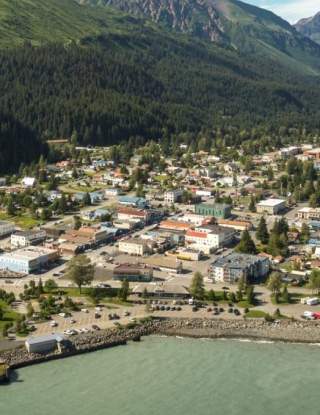About Seward FAQ
WHAT IS THE POPULATION OF SEWARD?
Seward’s year-round population is approximately 2,600 residents within city limits and 2,600 residents just beyond city boundaries. During the summer, our population nearly doubles as seasonal workers arrive to support our tourism and commercial fishing industries.
WHERE IS KENAI FJORDS NATIONAL PARK AND HOW DO I GET THERE?
The park is located just outside of Seward. Exit Glacier is the only area of the park accessible by road. If you are here without a car, shuttle and taxi services are available between Exit Glacier and Seward from May through September. Boat tours—including wildlife cruises, private charters, kayaking trips, and some sportfishing trips—are the most accessible way to experience the fjords, tidewater glaciers, and marine wildlife. Weather conditions make the park more difficult to access in the winter. Great options exist for winter recreation in the Exit Glacier area.
HOW DO I GET TO SEWARD?
Seward is directly connected to the Lower 48 via the Alaska Highway. The closest commercial airport to Seward is Ted Stevens Anchorage International Airport. From there, pick up a rental car, RV, or hop on a shuttle bus to enjoy the scenic 2.5-hour drive to Seward. From mid-May to mid-September, the Alaska Railroad offers visitors a relaxing way to take in the sights. Seward is also a popular cruise ship port.
WHERE IS THE BEST PLACE TO SEE WILDLIFE?
Generally speaking, you’re more likely to see a greater variety of marine wildlife the further you travel into Kenai Fjords. Sea otters and sea lions can be spotted year-round from the waterfront path and when walking the docks in the harbor. During the summer months, humpback whales and occasionally orcas can be spotted from the downtown waterfront or from Lowell Point. Moose and black bear are more likely to be spotted around Exit Glacier.
WILL I SEE THE AURORA BOREALIS?
Possibly, during late September or early October through April, when the skies are dark enough. Your ability to see the aurora depends on good solar flare activity and clear skies. We do get some spectacular Northern Lights, but due to our coastal location and frequent clouds, our displays are not as reliable as what you might find further north.



